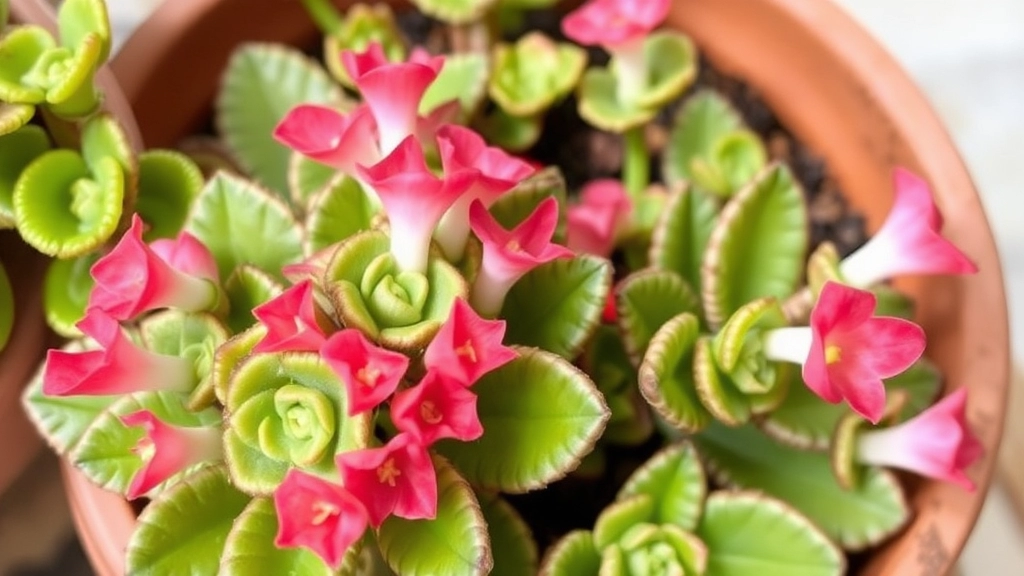Is Kalanchoe Toxic to Cats?
As a cat owner, you might be wondering, “Is Kalanchoe toxic to cats?” The short answer is yes. Kalanchoe, a popular houseplant, contains compounds that can be harmful to our feline friends. If your cat nibbles on this plant, they could experience symptoms like vomiting, diarrhea, and even more severe reactions such as heart arrhythmias.
Keeping Your Home Cat-Friendly
It’s crucial to keep your home cat-friendly by ensuring that toxic plants like Kalanchoe are out of reach. Always opt for safe alternatives and be vigilant about what your cat has access to. Understanding the risks and taking preventive measures can help keep your beloved pet safe and healthy.
As a cat owner, the health and safety of your furry friend is always a top priority. If you suspect your cat has ingested Kalanchoe, it’s crucial to recognise the symptoms of poisoning early.
Common Symptoms to Watch For
Kalanchoe poisoning can manifest in various ways. Here are the key symptoms to look out for:
– **Vomiting**: One of the most common signs, often occurring shortly after ingestion.
– **Diarrhoea**: Loose stools can indicate digestive distress.
– **Lethargy**: An unusual lack of energy or interest in activities.
– **Loss of Appetite**: A sudden disinterest in food can be alarming.
– **Abdominal Pain**: Your cat may exhibit signs of discomfort, such as hiding or reluctance to be touched.
– **Cardiac Issues**: In severe cases, symptoms may escalate to heart arrhythmias, which can be life-threatening.
These symptoms can vary in severity depending on the amount ingested and the individual cat’s health. If you notice any of these signs, it’s essential to act quickly. For more detailed information on prevention and symptoms, you can read about whether [florist Kalanchoe is toxic to cats](https://planthq.org/is-florist-kalanchoe-toxic-to-cats-symptoms-prevention/). Additionally, understanding the [medicinal benefits of Kalanchoe daigremontiana](https://planthq.org/medicinal-benefits-of-kalanchoe-daigremontiana-explained/) can provide insights into the plant’s properties.
Why Kalanchoe is Toxic to Cats
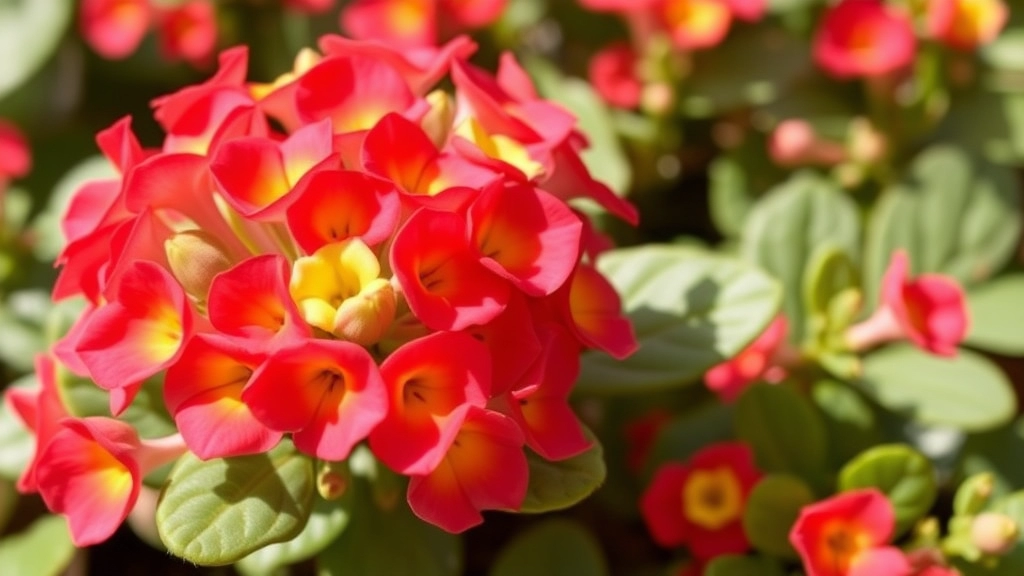
So, you’ve got a curious cat and a lovely Kalanchoe plant sitting on your windowsill.
But why is this pretty little plant a no-go for our feline friends?
Kalanchoe contains compounds called bufadienolides, which can wreak havoc on a cat’s system.
These compounds can mess with the heart, leading to some serious complications.
Here’s what you need to know:
- Heart Issues: Kalanchoe can cause arrhythmias, which means your cat’s heart might not beat properly. This can be dangerous.
- Gastrointestinal Upset: If your cat nibbles on this plant, it may experience vomiting or diarrhea. Not fun for anyone involved!
- Lethargy: Cats that have ingested Kalanchoe might feel sluggish or weak. You’ll notice them lounging around more than usual.
- Excessive Salivation: If your kitty is drooling more than normal, it could be a sign they’ve gotten into something they shouldn’t have.
- Seizures: In severe cases, ingestion can lead to seizures. This is a serious issue that requires immediate attention.
Understanding why Kalanchoe is toxic to cats is crucial for keeping them safe and happy.
Immediate Actions if Your Cat Ingests Kalanchoe
If you suspect that your cat has ingested Kalanchoe, it’s natural to feel alarmed. The symptoms can manifest quickly, and knowing what to do can make all the difference.
Key Steps to Take:
- Stay Calm: Your cat can sense your anxiety. Keeping a level head will help you act efficiently.
- Assess the Situation: Check for any immediate symptoms such as vomiting, diarrhoea, or lethargy. Take note of how much of the plant your cat may have eaten.
- Remove Access: Ensure that your cat cannot reach any remaining Kalanchoe. This prevents further ingestion.
- Contact a Veterinarian: Call your vet immediately. Provide them with details about the plant and your cat’s condition. They may advise you to bring your cat in for an examination.
- Do Not Induce Vomiting: Unless instructed by a veterinarian, do not attempt to make your cat vomit. This can sometimes cause more harm than good.
- Gather Information: If possible, take a picture of the plant or bring a sample with you to the vet. This can help in assessing the situation more effectively.
- Monitor Your Cat: Keep a close eye on your cat for any changes in behaviour or health. Document any symptoms to share with your vet.
For more information on Kalanchoe care and potential issues, you might find our guide on why your florist Kalanchoe is not flowering helpful. Additionally, if you’re interested in learning more about the different types of Kalanchoe, check out our article on exploring different Kalanchoe species for your garden.
Treatment Options for Kalanchoe Poisoning
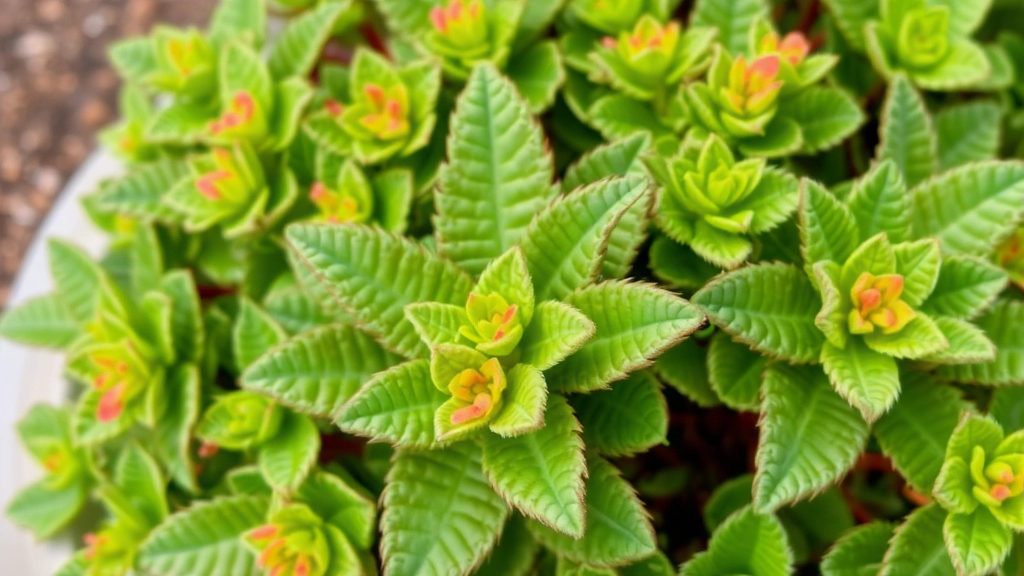
If you suspect that your cat has ingested Kalanchoe, it’s natural to feel anxious about their health. Understanding the treatment options available can help ease your mind and ensure your feline friend receives the care they need.
Immediate Veterinary Care
The first step in addressing Kalanchoe poisoning is to seek veterinary assistance. Time is of the essence. Here’s what you can expect:
- Veterinary Assessment: Your vet will conduct a thorough examination to assess your cat’s condition, including checking for symptoms like vomiting, lethargy, or heart issues.
- Induced Vomiting: If ingestion occurred recently, the vet may induce vomiting to prevent further absorption of toxins.
- Activated Charcoal: This may be administered to help bind the toxins in your cat’s system and reduce absorption.
Supportive Care
Once your vet has assessed the situation, they may recommend supportive care, including:
- Intravenous Fluids: To prevent dehydration and support kidney function.
- Medications: Anti-nausea or heart medications may be prescribed, depending on your cat’s symptoms.
- Monitoring: Your cat may need to be monitored for several hours or even days, especially if they show severe symptoms.
Home Care After Treatment
Once your cat is stable and has returned home, it’s important to monitor them closely. Here’s what you can do:
- Watch for Symptoms: Keep an eye out for any recurring symptoms like vomiting or unusual behaviour.
- Hydration: Ensure your cat has access to fresh water at all times.
- Diet: Your vet may suggest a bland diet for a few days to help your cat recover.
Follow-Up
Don’t forget to schedule a follow-up appointment with your vet. This is crucial for ensuring your cat is recovering well.
Preventing Kalanchoe Exposure in Cats
As we consider the implications of Kalanchoe poisoning, it’s crucial to focus on prevention. How can we safeguard our feline friends from this toxic plant?
1. Placement is Key
– **Keep Kalanchoe Out of Reach**: If you have Kalanchoe plants, place them high up on shelves or in hanging baskets. Cats are curious creatures and will explore any surface they can reach.
2. Choose Cat-Friendly Spaces
– **Designate Cat-Free Zones**: Create areas in your home where plants are off-limits to your cat. This can be a specific room or a shelf that your cat cannot access.
3. Educate Yourself and Others
– **Learn About Toxic Plants**: Familiarise yourself with other plants that are harmful to cats. Knowledge is power when it comes to keeping your pet safe.
4. Engage Family Members
– **Raise Awareness**: Make sure everyone in your household knows about Kalanchoe toxicity. Discuss the importance of plant safety and encourage them to help monitor areas where plants are displayed.
5. Opt for Safe Alternatives
– **Select Non-Toxic Plants**: Consider replacing Kalanchoe with cat-friendly plants such as cat grass or spider plants. This way, you can still enjoy greenery without the risk. For more information on the care and propagation of this plant, check out our [complete care guide for Kalanchoe Blossfeldiana](https://planthq.org/complete-care-guide-for-kalanchoe-blossfeldiana-succulent/). Additionally, if you’re interested in other varieties, our [guide to Pink Kalanchoe plant care](https://planthq.org/complete-guide-to-pink-kalanchoe-plant-care/) offers valuable insights.
Safe Plant Alternatives for Cat Owners
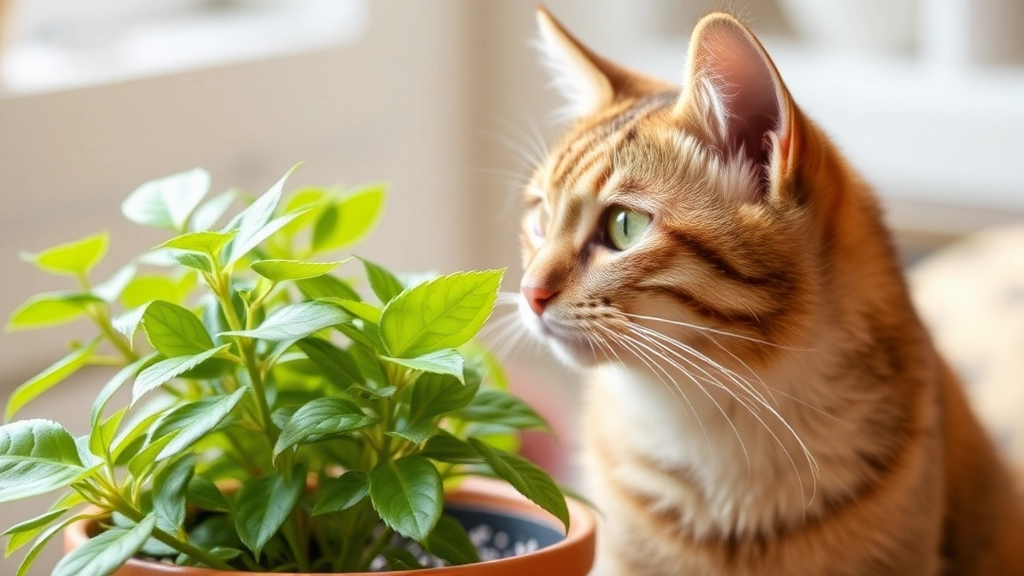
So, you’re worried about Kalanchoe poisoning and want to keep your furry friend safe.
It’s a valid concern, and the good news is there are plenty of pet-friendly plants out there that can brighten up your home without putting your cat at risk.
Here are some fantastic alternatives to consider:
- Spider Plant: Super easy to care for and non-toxic. Plus, cats love to play with its long, arching leaves!
- Boston Fern: This lush, green plant adds a touch of nature to your space. It’s safe for cats and helps purify the air.
- Areca Palm: A beautiful indoor palm that’s safe for your pets and adds a tropical vibe to your home.
- Bamboo Palm: Not only is it safe for cats, but it’s also great for improving indoor air quality.
- Parlor Palm: This low-maintenance plant is perfect for those who might not have a green thumb!
- Calathea: Known for its stunning foliage, this plant is also safe for your feline friends.
- African Violet: A lovely flowering option that’s non-toxic to cats and adds a pop of colour.
- Prayer Plant: With its unique leaf patterns, it’s both beautiful and safe for your pets.
By choosing these plants, you can enjoy the beauty of greenery in your home without worrying about your cat’s health.
Remember, even safe plants can cause mild stomach upset if ingested in large quantities. So, it’s always a good idea to monitor your cat’s interaction with any new plant.
Consulting a Veterinarian for Plant Safety
When it comes to ensuring the safety of our feline friends, many cat owners often wonder: are the plants in my home safe?
Consulting a veterinarian is an essential step in safeguarding your cat from potential plant toxicity, including the dangers posed by Kalanchoe.
Why Consult a Veterinarian?
- Expertise: Veterinarians have in-depth knowledge about various plants and their effects on pets.
- Personalized Advice: They can provide tailored recommendations based on your cat’s health history and lifestyle.
- Emergency Guidance: If your cat has ingested a toxic plant, your vet can offer immediate advice on how to proceed.
What to Discuss with Your Veterinarian
- Plant Identification: Bring photos or samples of plants you’re unsure about.
- Symptoms of Poisoning: Discuss specific symptoms to watch for if your cat has been exposed to any plants.
- Preventative Measures: Ask for tips on how to create a safe environment for your cat.
When to Seek Help
- If you suspect your cat has ingested Kalanchoe or any other toxic plant.
- If your cat exhibits unusual behaviour or symptoms after being around plants.
By consulting a veterinarian, you can gain peace of mind and ensure that your home is a safe haven for your cat.
Recognizing Toxic Plants in Your Home
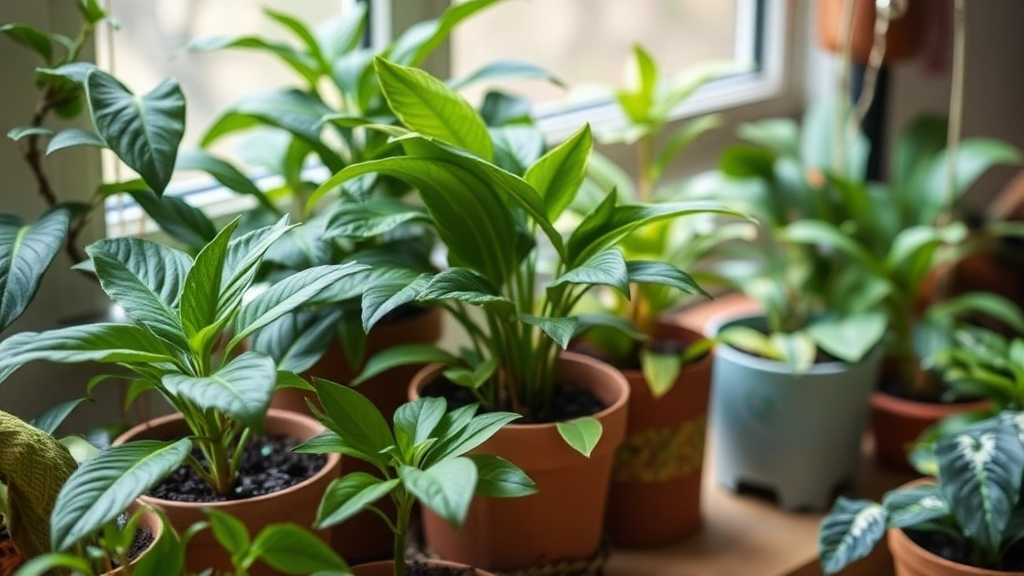
Have you ever looked around your home and wondered if any of your beloved plants could be harmful to your furry friend?
It’s a valid concern, especially with so many beautiful plants out there, like Kalanchoe, that can pose serious risks to cats.
Identifying Toxic Plants
Recognizing toxic plants in your home doesn’t have to be a daunting task. Here are some simple steps to help you keep your cat safe:
- Research Common Houseplants: Familiarise yourself with common toxic plants, including Kalanchoe, Lilies, and Pothos. A quick online search can save you a lot of worry.
- Read Labels: When purchasing plants, always check for labels that indicate whether a plant is safe for pets.
- Use Apps: There are several mobile apps available that can help identify plants and their toxicity levels. Download one and make it your go-to plant detective!
- Observe Your Cat: Keep an eye on your cat’s behaviour around plants. If they seem overly curious or start nibbling, it might be time to reassess your greenery.
- Create a Plant List: Keep a list of all the plants in your home. This way, you can easily refer back to it whenever you’re considering adding a new plant.
Taking these steps can significantly reduce the risk of your cat encountering a toxic plant.
Educating Family Members About Plant Toxicity
Understanding the dangers of plant toxicity is crucial for the safety of our beloved cats.
Many cat owners may be unaware that common household plants can pose serious health risks.
Here are some effective ways to educate family members about plant toxicity:
- Discuss the Risks:
- Share information about specific plants, like Kalanchoe, that are toxic to cats.
- Highlight symptoms of poisoning, such as vomiting or lethargy.
- Create a Plant List:
- Compile a list of toxic and non-toxic plants.
- Include images for easy identification.
- Use Visual Aids:
- Posters or infographics can be effective tools.
- Place them in common areas to remind everyone of plant safety.
- Involve Everyone:
- Organise a family meeting to discuss plant care.
- Encourage questions and share personal stories about plant-related incidents.
- Set Boundaries:
- Designate specific areas for plants that are safe and toxic.
- Ensure family members know which plants are off-limits.
- Regular Updates:
- Keep the information current by reviewing plant lists regularly.
- Share new findings or changes in plant toxicity.
FAQs About Kalanchoe Toxicity in Cats
Why is Kalanchoe toxic to cats?
Kalanchoe contains compounds called bufadienolides, which can cause serious health issues in cats, including heart problems and gastrointestinal upset.
What symptoms should I look for if my cat ingests Kalanchoe?
Common symptoms include arrhythmias, vomiting, diarrhea, lethargy, excessive salivation, and in severe cases, seizures.
What should I do if my cat eats Kalanchoe?
Seek immediate veterinary care. Your vet may induce vomiting, administer activated charcoal, and provide supportive care such as intravenous fluids and medications.
How can I treat Kalanchoe poisoning at home?
While initial treatment should be done by a vet, you can monitor your cat for recurring symptoms, ensure they stay hydrated, and follow any dietary recommendations from your vet.
Are there any safe plant alternatives for cat owners?
Yes, some pet-friendly plants include Spider Plant, Boston Fern, Areca Palm, Bamboo Palm, Parlor Palm, Calathea, African Violet, and Prayer Plant.
How can I recognize toxic plants in my home?
Research common toxic plants, read labels when purchasing new plants, use mobile apps for identification, observe your cat’s behavior around plants, and keep a list of all the plants in your home.
What are bufadienolides?
Bufadienolides are toxic compounds found in Kalanchoe that can affect a cat’s heart and gastrointestinal system.
Can mild stomach upset occur with safe plants?
Yes, even non-toxic plants can cause mild stomach upset if ingested in large quantities. Always monitor your cat’s interaction with any new plant.
Is it necessary to schedule a follow-up vet appointment after treatment?
Yes, a follow-up appointment is crucial to ensure your cat is recovering well after treatment for Kalanchoe poisoning.
References
-
ASPCA: Kalanchoe
-
Pet Poison Helpline: Kalanchoe
-
Cornell Feline Health Center: Toxic Plants
